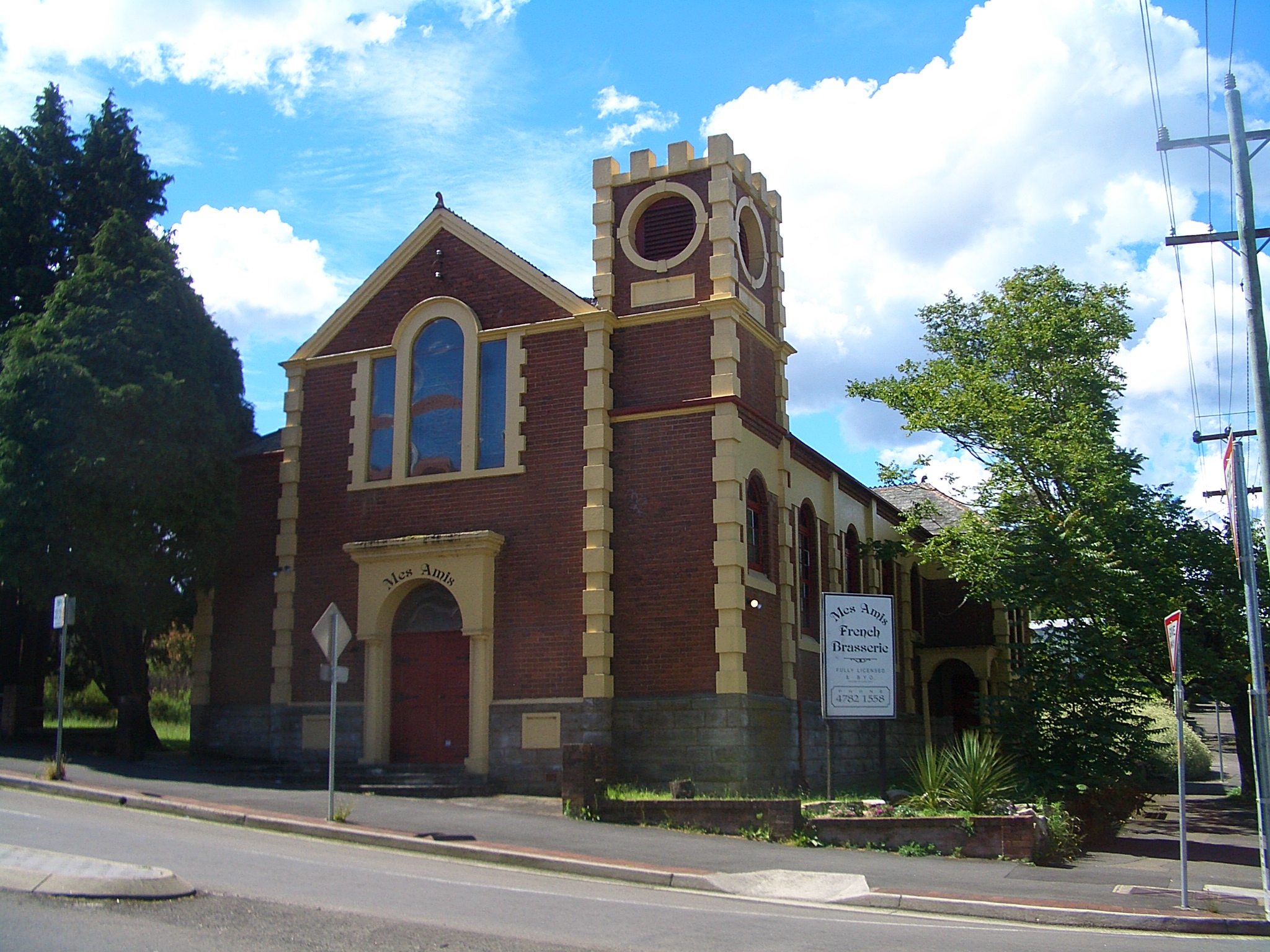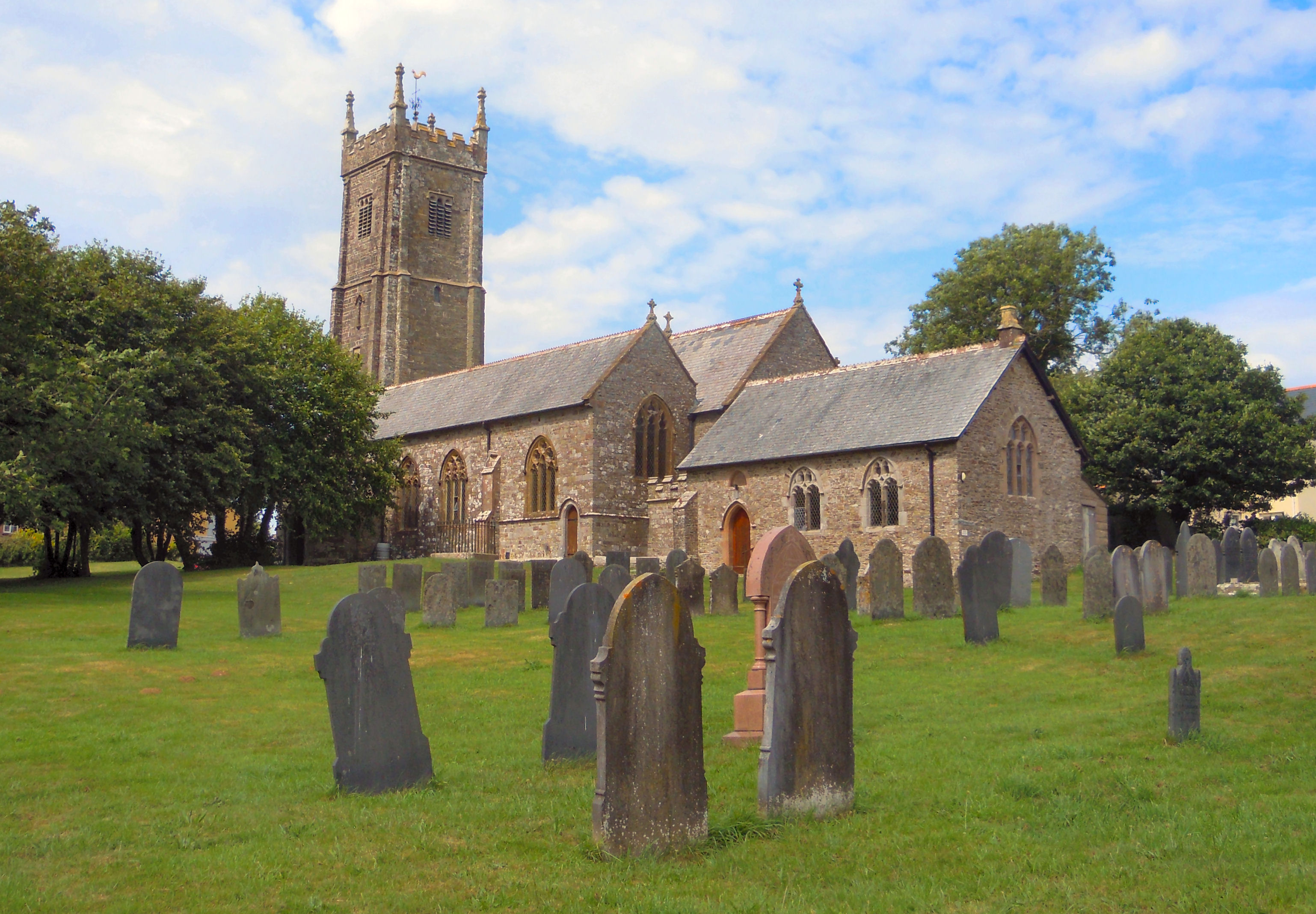|
East Putford
East Putford is a small settlement and civil parish in the local government district of Torridge, Devon, England. The parish, which lies about halfway between the towns of Holsworthy and Bideford, is surrounded clockwise from the north by the parishes of Parkham, Buckland Brewer, Bulkworthy, West Putford, and Woolfardisworthy. In 2001 its population was 103, slightly lower than the 125 residents it had in 1901. The western boundary of the parish is formed by the River Torridge and the land rises from the river to over 200 m. near the top of Melbury Hill in the north. Tumuli on the high ground provide evidence for early inhabitants here. The parish church, dedicated to St Philip and St James the Less, was extensively restored in 1882, but has since been deconsecrated and used as a farm building, though by 2004 both the building and its churchyard were overgrown. Two farmhouses in the parish are of interest. Mambury was a freehold estate from its origin in the 12th century, a ... [...More Info...] [...Related Items...] OR: [Wikipedia] [Google] [Baidu] |
West Putford
West Putford is a small settlement and civil parish in the local government district of Torridge, Devon, England. The parish, which lies about north of the town of Holsworthy, is surrounded clockwise from the north by the parishes of East Putford (with which it is joined for ecclesiastical purposes), a small part of Bulkworthy, Abbots Bickington, Sutcombe, Bradworthy and Woolfardisworthy. In 2001 its population was 181, compared to 216 in 1901. The eastern and northern boundaries of the parish mostly follow the River Torridge over which is the 13th-century Kismeldon Bridge. Tumuli on the high ground provide evidence for early inhabitants here. The cruciform Cruciform is a term for physical manifestations resembling a common cross or Christian cross. The label can be extended to architectural shapes, biology, art, and design. Cruciform architectural plan Christian churches are commonly describe ... early 14th-century parish church is dedicated to Saint Stephen. It ... [...More Info...] [...Related Items...] OR: [Wikipedia] [Google] [Baidu] |
Prayer Book Rebellion
The Prayer Book Rebellion or Western Rising was a popular revolt in Cornwall and Devon in 1549. In that year, the ''Book of Common Prayer'', presenting the theology of the English Reformation, was introduced. The change was widely unpopular, particularly in areas where firm Catholic religious loyalty (even after the Act of Supremacy in 1534) still existed, such as Lancashire. Along with poor economic conditions, the enforcement of the English language literature (as opposed to the traditional Latin) led to an explosion of anger in Cornwall and Devon, initiating an uprising. In response, Edward Seymour, 1st Duke of Somerset sent John Russell to suppress the revolt, with the rebels being defeated and its leaders executed two months after the beginning of hostilities. Background One probable cause of the Prayer Book Rebellion was the religious changes recently implemented by the government of the new king, Edward VI. In the late 1540s, Lord Protector Somerset, on behalf of th ... [...More Info...] [...Related Items...] OR: [Wikipedia] [Google] [Baidu] |
Nikolaus Pevsner
Sir Nikolaus Bernhard Leon Pevsner (30 January 1902 – 18 August 1983) was a German-British art historian and architectural historian best known for his monumental 46-volume series of county-by-county guides, ''The Buildings of England'' (1951–74). Life Nikolaus Pevsner was born in Leipzig, Saxony, the son of Anna and her husband Hugo Pevsner, a Russian-Jewish fur merchant. He attended St. Thomas School, Leipzig, and went on to study at several universities, Munich, Berlin, and Frankfurt am Main, before being awarded a doctorate by Leipzig in 1924 for a thesis on the Baroque architecture of Leipzig. In 1923, he married Carola ("Lola") Kurlbaum, the daughter of distinguished Leipzig lawyer Alfred Kurlbaum. He worked as an assistant keeper at the Dresden Gallery between 1924 and 1928. He converted from Judaism to Lutheranism early in his life. During this period he became interested in establishing the supremacy of German modernist architecture after becoming aware of Le ... [...More Info...] [...Related Items...] OR: [Wikipedia] [Google] [Baidu] |
Deconsecrated
Deconsecration, also called secularization, is the act of removing a religious blessing from something that had been previously consecrated by a minister or priest of that religion. The practice is usually performed on churches or synagogues to be rendered to non-religious (secular) use or demolished. See also * Consecration * Desacralization of knowledge * Desecration * Secularization (church property) Secularization is the confiscation of church property by a government, such as in the suppression of monasteries. The term is often used to specifically refer to such confiscations during the French Revolution and the First French Empire in the ..., the confiscation of church property by a government References {{religion-stub Christian worship and liturgy ... [...More Info...] [...Related Items...] OR: [Wikipedia] [Google] [Baidu] |
Victorian Restoration
The Victorian restoration was the widespread and extensive refurbishment and rebuilding of Church of England churches and cathedrals that took place in England and Wales during the 19th-century reign of Queen Victoria. It was not the same process as is understood today by the term building restoration. Against a background of poorly maintained church buildings, a reaction against the Puritan ethic manifested in the Gothic Revival, and a shortage of churches where they were needed in cities, the Cambridge Camden Society and the Oxford Movement advocated a return to a more medieval attitude to churchgoing. The change was embraced by the Church of England which saw it as a means of reversing the decline in church attendance. The principle was to "restore" a church to how it might have looked during the " Decorated" style of architecture which existed between 1260 and 1360, and many famous architects such as George Gilbert Scott and Ewan Christian enthusiastically accepted commis ... [...More Info...] [...Related Items...] OR: [Wikipedia] [Google] [Baidu] |
Tumulus
A tumulus (plural tumuli) is a mound of earth and stones raised over a grave or graves. Tumuli are also known as barrows, burial mounds or ''kurgans'', and may be found throughout much of the world. A cairn, which is a mound of stones built for various purposes, may also originally have been a tumulus. Tumuli are often categorised according to their external apparent shape. In this respect, a long barrow is a long tumulus, usually constructed on top of several burials, such as passage graves. A round barrow is a round tumulus, also commonly constructed on top of burials. The internal structure and architecture of both long and round barrows has a broad range; the categorization only refers to the external apparent shape. The method of may involve a dolmen, a cist, a mortuary enclosure, a mortuary house, or a chamber tomb. Examples of barrows include Duggleby Howe and Maeshowe. Etymology The word ''tumulus'' is Latin for 'mound' or 'small hill', which is derived from th ... [...More Info...] [...Related Items...] OR: [Wikipedia] [Google] [Baidu] |
River Torridge
The River Torridge is a river in Devon in England; it rises near Meddon. The river describes a long loop through Devon farming country where its tributaries the Lew and Okement join before meeting the Taw at Appledore and flowing into the Bristol Channel. The river is spate dependent and often flows between wooded banks which can be steep. The Torridge local government district is named after the river. It was the home of Tarka the Otter in Henry Williamson's book. Route The river rises close to the border with Cornwall (north of the source of the River Tamar). Its two primary sources are Seckington Water, which rises near Baxworthy Cross, and Clifford Water, the longer of the two, which rises alongside the A39 at Higher Clovelly. These run south and join to form the Torridge at Huddisford. It then flows generally east, passing between East Putford and West Putford, and near Bradford it is joined by the River Waldon, then heads east past Black Torrington and Sheepwash. It ... [...More Info...] [...Related Items...] OR: [Wikipedia] [Google] [Baidu] |
Woolfardisworthy, Torridge
Woolfardisworthy is a village and civil parish in the Torridge district in the English county of Devon. The village is accessible via the A39 road, from the village. Name The name of the village is a local curiosity, as its pronunciation (and occasional spelling) differs from what one might expect. On local signs, the village is sometimes marked as Woolsery alongside the original name. This is due to the pronunciation of the village's name being . The name also provides evidence for the power of the written word in conserving place-names: the shortened pronunciation is known to have been in use since the 17th century. According to the ''Oxford Dictionary of English Place Names'' (Eilert Ekwall, 4th ed., 1960), the origin of the name is probably "Wulfheard's homestead". The element "worthy" is from Old English ''worþig'', one of several words used by the Anglo-Saxons to denote a homestead, farmstead or small settlement. Woolfardisworthy (the full name) - along with a few othe ... [...More Info...] [...Related Items...] OR: [Wikipedia] [Google] [Baidu] |
Bulkworthy
Bulkworthy is a village and civil parish in the Torridge district of Devon, England, about 9 miles southwest of Great Torrington, and on the River Torridge. According to the 2001 census it had a population of 83. It is listed in the ''Domesday Book Domesday Book () – the Middle English spelling of "Doomsday Book" – is a manuscript record of the "Great Survey" of much of England and parts of Wales completed in 1086 by order of King William I, known as William the Conqueror. The manusc ...'' as ''Buchesworde''. References External links Villages in Devon Torridge District {{Devon-geo-stub ... [...More Info...] [...Related Items...] OR: [Wikipedia] [Google] [Baidu] |
Civil Parish
In England, a civil parish is a type of administrative parish used for local government. It is a territorial designation which is the lowest tier of local government below districts and counties, or their combined form, the unitary authority. Civil parishes can trace their origin to the ancient system of ecclesiastical parishes, which historically played a role in both secular and religious administration. Civil and religious parishes were formally differentiated in the 19th century and are now entirely separate. Civil parishes in their modern form came into being through the Local Government Act 1894, which established elected parish councils to take on the secular functions of the parish vestry. A civil parish can range in size from a sparsely populated rural area with fewer than a hundred inhabitants, to a large town with a population in the tens of thousands. This scope is similar to that of municipalities in Continental Europe, such as the communes of France. However, ... [...More Info...] [...Related Items...] OR: [Wikipedia] [Google] [Baidu] |
Buckland Brewer
Buckland Brewer is a village and civil parish in the Torridge district of Devon, England, 4.7 miles south of Bideford. Historically the parish formed part of Shebbear Hundred. According to the 2001 census it had a population of 777, increasing to 794 at the 2011 census The village is part of Waldon electoral ward. The population for this at the same census was 1,679. __TOC__ Population Historical population figures show a variable trend of increased and decreased population. Torridge District Council historical data shows the following populations: * 1801: 872 * 1901: 644 * 2001: 777 Religion The parish church of St Mary and St Benedict (Church of England) is part of the benefice of the Hartland Coast Team Ministry. This falls within Hartland Deanery, in the Archdeaconry of Barnstaple. This is in the Diocese of Exeter. The church tower is over 500 years old, with a Norman stoup and doorway. There are monuments to, among others, John William Taylor of John Taylor & Co, th ... [...More Info...] [...Related Items...] OR: [Wikipedia] [Google] [Baidu] |







